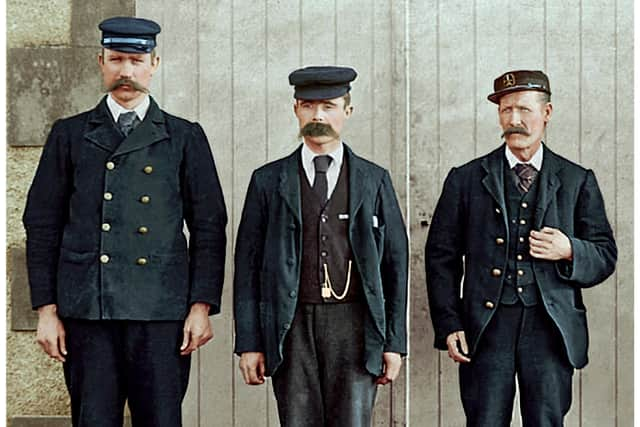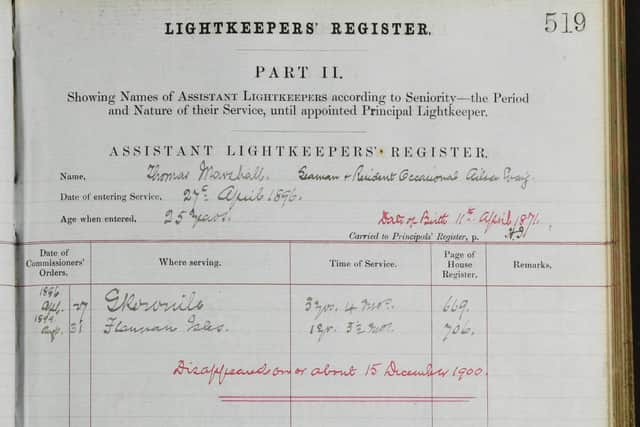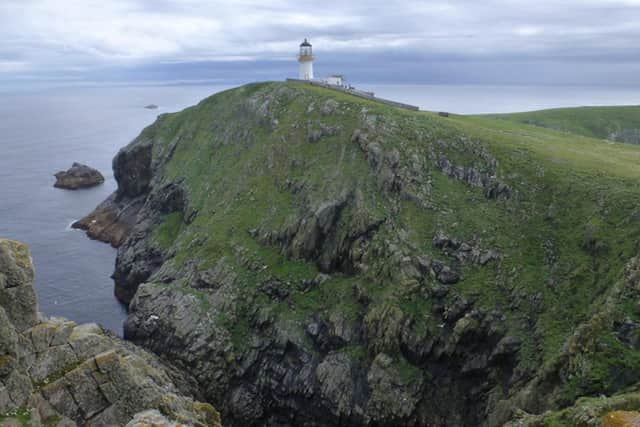Lighthouses Scotland: 'Disappeared' - the last records of missing Flannan Isle lighthouse keepers come into view
Among the heavily-bound books are entries that, handwritten in red ink and underlined twice, stand out amongst the rest: “Disappeared, on or about December 15, 1900.”
They are found in the work records of the Northern Lighthouse Board (NLB) for Thomas Marshall and James Ducat, who vanished from the Flannan Isles lighthouse, which sits 20 miles west of the Isle of Lewis, along with their colleague Donald MacArthur.
Never found, they are the last entries for the men.


Advertisement
Hide AdAdvertisement
Hide AdThe pages are among some 2,000 documents from NLB archives, which can now be accessed on the ScotlandsPeople genealogy service, with the lighthouse keeper records among those most commonly requested from National Records of Scotland.
The collection in full shines a light on the way of life of 1,300 lighthouse keepers working in 92 lighthouses between 1837 and 1921.
The records cover all of Scotland, from Muckle Flugga near Shetland to the most southerly at Drumore, Mull of Galloway. They also include Bell Rock, the world’s oldest working sea-washed lighthouse built between 1807 and 1810 by Robert Stevenson to protect seafarers from the reef that was often obscured from view. Three keepers were generally stationed there and slept in bunks, stacked on top of each other in a 13-foot circular room. The lighthouse did not have a toilet until 1964.
Jocelyn Grant, NRS outreach and learning archivist, said the records charted a profession “that has now mostly passed into history”.


She said: “The Northern Lighthouse Board records are frequently requested by visitors to our buildings. If your ancestor worked in a Scottish lighthouse, there’s a good chance you will find them here.
“This is the latest in a series of popular record sets added to the National Records of Scotland genealogy service ScotlandsPeople as part of our wider programme, making more of our archive holdings accessible to people across the country and around the world.”
Ms Grant said lighthouse keepers continued to have an enduring fascination for the public given their isolated working lives in some of Scotland’s most hazardous locations.
She said: “Many keepers lived in cramped spaces for long periods, often with only basic washing facilities or toilets. They could be isolated from family and friends while they did their crucial work maintaining the safety of shipping around the Scottish coast.”


Advertisement
Hide AdAdvertisement
Hide AdThe Flannan Isles mystery continues to loom large in public consciousness. The three male keepers disappeared just a year after the lighthouse came into operation to ensure the safety of increasing volumes of trans-Atlantic crossings and cargo. What happened to the three men has conjured much speculation over time and continues to inspire musicians, writers, filmmakers and armchair detectives.
Tales of supernatural activity on the islands, which are also known as the Seven Hunters, has stoked the narrative, as have multiple theories. These include that one of the men may have faked their own deaths by jumping on a passing ship for a new life far from the Flannan Isles. NLB correspondence from the time concludes the men were, most likely, washed away in a storm.
Comments
Want to join the conversation? Please or to comment on this article.